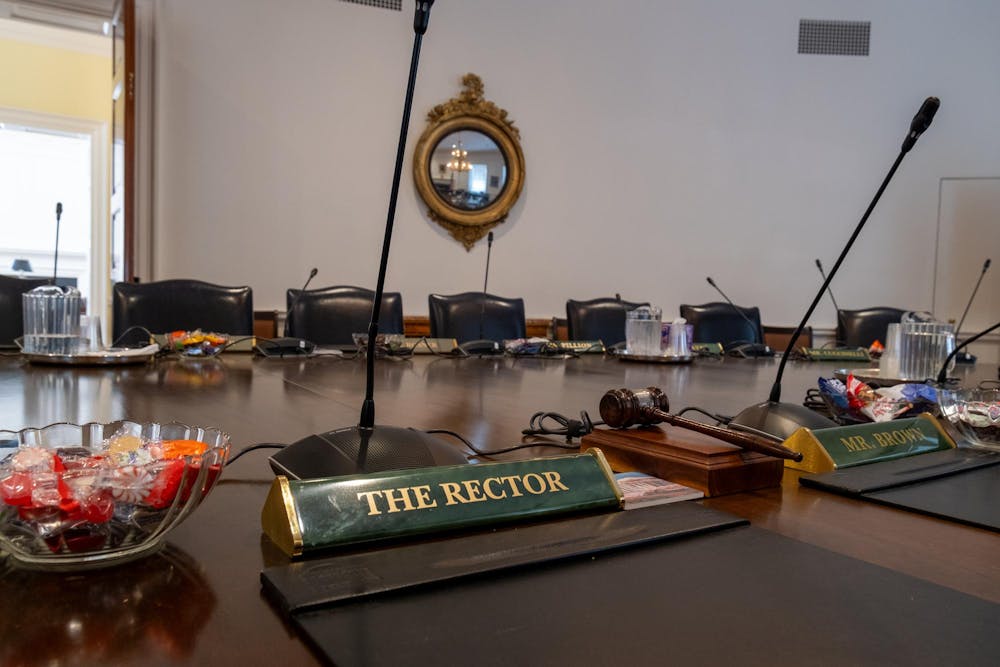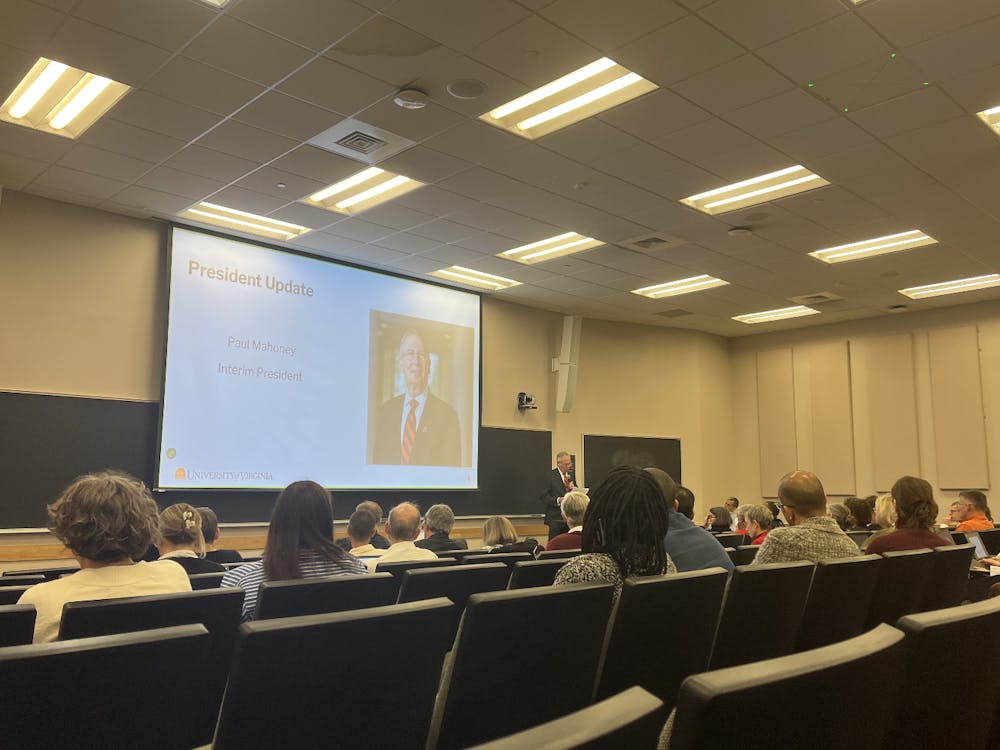In the almost four weeks since the resignation of former University President Jim Ryan, the Board of Visitors has formed a committee to search for a permanent president, a process that will take time given the complicated considerations at play.
Jennifer Wagner Davis, executive vice president and chief operating officer, assumed the role of acting president July 12 under the University’s continuity of operations plan, which lays out procedures for the University to continue its mission in the event that normal operations are severely disrupted. An interim president has not yet been selected.
Despite uncertainty surrounding when an interim will be appointed, there is a protocol for finding and selecting a permanent president. According to the Board’s manual, it is the rector's responsibility to appoint and lead a special Board committee for nominating a president, comprising at least five Board Members.
The special committee to nominate the 10th president was announced Friday, and will be chaired by Rector Rachel Sheridan. Of the committee’s 28 members, 10 currently sit on the Board. The rest of the committee is made up of a combination of alumni, faculty, former University officials and former Board members.
The last committee for nominating a president met a total of 17 times over the course of eight months, holding both open and closed meetings. The committee also held joint meetings with the Faculty Senate executive council, and with faculty from several of the University’s 12 Schools.
Once the committee has nominated a candidate, the full Board holds a vote. Since the special committee is expected to conduct an exhaustive search, the Board’s vote is usually unanimous as it was for the elections of Ryan and Sullivan.
In line with previous presidential searches at the University, Sheridan has expressed — through communications to the community — the Board’s commitment to involving the various constituencies that make up the University community. Sheridan has also confirmed that the Board intends to include different stakeholders during the ongoing search for an interim President.
“Shared governance is a core value of this institution and we will uphold it as we pursue the selection of an interim president, as well as our 10th university president after that,” Sheridan said in a statement to U.Va. Today.
A U.Va. Today article listed several ways that members of the University community will be solicited for feedback during the presidential searches. Listening sessions will be organized but have not yet been scheduled. Community members were also able to nominate candidates for interim president. Nominations were accepted through a website set up by the University until Friday at 5 p.m.
The search committee announced Friday contains 10 Board members, four senior administrators, two students, four alumni, three former Board members and four faculty. For comparison, the search committee which hired Ryan had 11 Board members, five faculty, two students, a senior member of the University Medical Center and three former Board members.
Other than announcing a search committee, the University has not provided a timeline for the search for its 10th permanent president.
But before the selection of a permanent president, the Board can appoint an interim. They have said they will appoint one shortly, but have not given any timeline. Moreover, it is unclear whether the Board can meet to select an interim, due to a lawsuit filed by several Democrats in the Virginia Senate against three public university rectors, over the participation of eight appointments Gov. Glenn Youngkin made.
Sheridan is a defendant in the suit over the participation of Ken Cuccinelli, former Virginia Attorney General and class of 1991 alumnus, who is one of eight appointees across three schools being challenged.
Community members have said that they expect that the University’s interim president will be selected from within the University, something which has been the norm at other institutions and was the case when former University President Teresa Sullivan resigned under pressure from the Board in June 2012.
After Sullivan announced her resignation, the Board convened in a special session and appointed Carl Zeithaml, dean of the McIntire School of Commerce, as the incoming interim president only nine days after Sullivan announced her resignation. He never served as interim president, as Sullivan was ultimately reinstated as president before his scheduled start date.
A preliminary hearing in the lawsuit to prevent Cuccinelli from participating in Board meetings took place Friday, with a ruling expected by next Tuesday. The next regularly scheduled meeting of the Board is set for Sept. 11 and 12. Both events could provide more clarity as to when the University’s next president may be selected.







